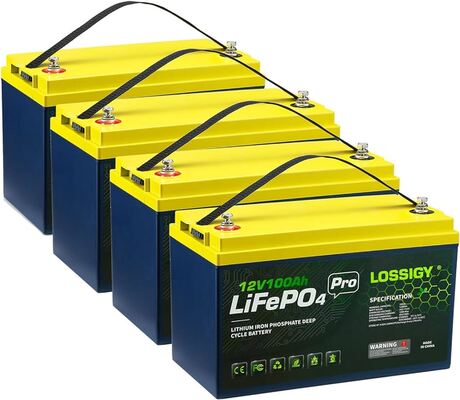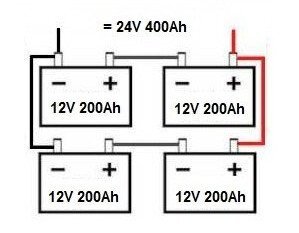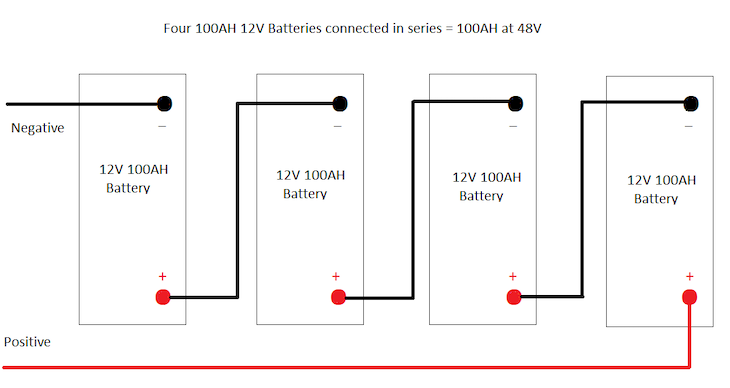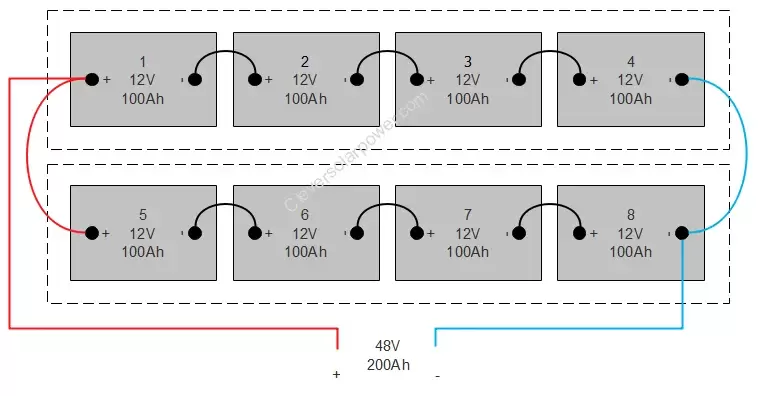
Powering Your Home with Solar: A Guide to Battery Systems
In recent years, the push towards renewable energy has gained significant momentum, with many homeowners opting for solar power systems to reduce their reliance on traditional grid electricity. One crucial component of a solar power setup is the battery system, which stores excess energy generated by solar panels for use during times of low sunlight or at night. In this guide, we'll delve into the world of batteries for home solar power systems, covering setups for 12V, 24V, and 48V systems, and how to correctly wire batteries in series to achieve the desired voltage.
Understanding Battery Systems
Before we dive into the specifics of different voltage setups, let's briefly understand how battery systems work in a solar power context. Batteries store electrical energy in chemical form, which can then be converted back into electrical energy when needed. In a solar power system, batteries play a crucial role in storing excess energy generated by solar panels during periods of high sunlight, ensuring a continuous power supply even when the sun isn't shining.
Voltage Considerations
The voltage of a battery system is a critical factor in determining its compatibility with other components of the solar power setup, such as inverters and charge controllers. Common voltage options for home solar power systems include 12V, 24V, and 48V configurations.
12V System Setup
A 12V system is a popular choice for smaller-scale solar setups or RVs. To set up a 12V battery system, you'll typically connect one or more 12V batteries in parallel. This means that the positive terminals of all batteries are connected together, as are the negative terminals. This setup increases the overall capacity (measured in ampere-hours, or Ah) of the system while maintaining a 12V output.
24V System Setup
For larger residential or commercial solar installations, a 24V system may be more suitable. In a 24V setup, two 12V batteries are connected in series. This involves connecting the positive terminal of one battery to the negative terminal of the other, effectively doubling the voltage output to 24V while maintaining the capacity of a single battery.
 4 batteries 24volts 400ah
4 batteries 24volts 400ah
48V System Setup
For even greater power requirements, a 48V system offers increased efficiency and scalability. To set up a 48V system, four 12V batteries are typically connected in series. This arrangement involves connecting the positive terminal of one battery to the negative terminal of the next, repeating this process until all four batteries are connected. The result is a 48V output with the combined capacity of the individual batteries.
 4-12 volt batteries hooked up in series for 48 volts
4-12 volt batteries hooked up in series for 48 volts
Now 8 - 12 Volt Batteries Tied Together To Be 48 Volts and 400AH
 8 - 12 Volt Batteries Tied Together To Be 48 Volts and 400AH
8 - 12 Volt Batteries Tied Together To Be 48 Volts and 400AH
Series Connection
When connecting batteries in series to achieve higher voltages, it's essential to ensure that all batteries are of the same type, age, and capacity. Mismatched batteries can lead to uneven charging and discharging, reducing the overall lifespan and efficiency of the battery system. Additionally, proper fusing and safety precautions should be observed to prevent short circuits and other potential hazards.
Conclusion
Batteries are a vital component of any home solar power system, providing energy storage for use during periods of low sunlight or at night. By understanding the different voltage setups and how to correctly wire batteries in series, homeowners can design and install solar power systems that meet their energy needs efficiently and reliably. Whether it's a 12V, 24V, or 48V system, the key is to ensure proper sizing, configuration, and maintenance for optimal performance and longevity. With the right battery setup, harnessing the power of the sun has never been easier or more accessible.
What do you think? Leave a comment.